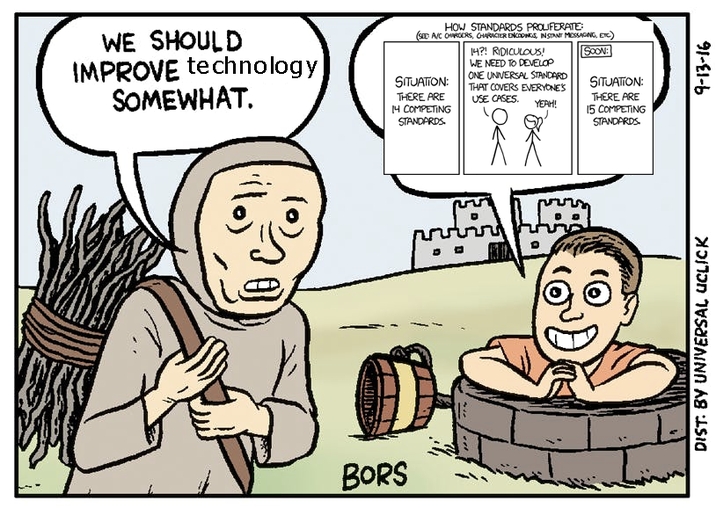Does this happen on wayland, X11 or both?
- 0 Posts
- 18 Comments

 75·6 months ago
75·6 months ago- Posts “Surprised Picachu face” image
- Gets DMCA’ed by Nintendo lawyers

 121·7 months ago
121·7 months agoHahaha, there’s a video where he says this. I guess most people here don’t know about it. I think Nick shared it on mastodon, but I’m not sure now.

 8·8 months ago
8·8 months agoFor me the appeal is potentially being able to verify that my code at least compiles and has basic functionality on Darwin. No idea if this can be useful for anyone other than developers.

 3·9 months ago
3·9 months agoOn gnome super+left click allows you to move windows, by default.
You can also enable super+right click to resize with gnome tweaks. In my opinion this should be the default.
Maybe you used bpytop, not btop? They look the same iirc.

 3·10 months ago
3·10 months agoThis game has really strange performance, it’s very light and runs great on potato computers. But a the same time it does not seem to make pull usage of your hardware. Anecdotally, performance got worse after I upgraded from a 6500 XT to a 6700 XT
~/gois created when compiling go programs, you can change it’s location with the GOPATH environment variable to something likeGOPATH=$HOME/.local/go, and moving the directory there.Never seen
~/perl5, could you provide the output ofperl -V

 12·10 months ago
12·10 months agoHey that’s a similar setup to mine, except I have 6700XT, on ultra settings, worst case scenario I get ~60FPS, on average it’s 80

 4·10 months ago
4·10 months agoMaybe you don’t have a short attention span 🤣 The only reason I use Kakoune is because I completely lose my train of thought if I can’t get an edit done quick enough.

 31·10 months ago
31·10 months ago☝️ 🤓 If by master/slave you mean “A system in which the master node is responsible to do everything a slave does plus coordinate slaves”
and by client/server you mean “A system in which a server is responsible only for coordinating clients”.
I don’t think so, because the first window is not special, it just spawns a server if none is assigned.

 8·10 months ago
8·10 months agoLong-ish time Kakoune user here.
For those who have tried Kakoune, once you’ve included things like Treesitter and the clangd language server, which one feels faster, Kakoune or Neovim?
I never felt the need to install something like Treesitter because I feel selection-based editing is already powerful enough, if that gives you an idea of how much faster I am with Kakoune compared to Neovim. Maybe I just don’t know everything Treesitter can do 🤔
which apparently allows you to have one master Kakoune instance and multiple slave instances that would be in sync

It’s not a master/slave setup, it really is client/server, even the first instance of kakoune that you open will be a client that you can close without the other instances going down with it.
I’m not sure if Kakoune shares the clipboard with all of those instances?
Yup, all shared: registers, buffers, marks, hooks. (You can choose not to share stuff between clients)

 5·10 months ago
5·10 months ago~/.config/mimeapps.list contains a line “terminal=foot.desktop” (tried also without .desktop).
I don’t think that is a real option.
There is no standard way to set the default terminal emulator, you need to tell your launcher application(sometimes through your DE settings) to use that terminal. For example,
j4-dmenu-desktophas the option--term.As a file managers I use lf and nnn, they both contain .desktop-files but I can’t launch them with keybinds or menu launcher. Same applies to vim.desktop, nothing happens.
How are you launching these programs? For keyboard shortcuts you generally need to specifically run the terminal emulator together with the program:
bindsym Mod4+Return exec alacritty -e hollywoodEdit. I managed to find a workaround for lf and nnn by editing the Exec= line in /usr/share/applications/*.desktop file. (Exec=/usr/bin/foot -e nnn) but I still can’t figure the swayimg imageviewer.
I would advise you to copy those files to
~/.local/share/applicationsso they do not get overwritten during updates.

 1·11 months ago
1·11 months agoMaybe your .bashrc has some logic that conditionally modifies your environment when run in a interactive terminal?
What does GTFO mean in this context exactly?
I work with backend web development, so running code could not be any easier, normally there’s a docker image setup watch for changes, recompile and execute.
My text editor is Kakoune, after learning the keybindings I just cannot go back to vim or vscode, selection based editing just makes so much sense to me.
I use NixOS, which comes in handy for keeping my home and office computers in-sync. I also use nix shells to declare the tools necessary to develop each project.
As for window management I use sway, one big window for kakoune to the left, other terminals for docker/tests/git to the right.

That’s… all stow does, there’s nothing more to it. If you need some other feature don’t waste your time trying to make it work with stow, It’s just a meme in my opinion.
About the “package manager” functionality, stow was originally supposed to be a development tool for the Perl programming language, you download a bunch of libraries into a directory, then use stow to merge those files into the root of your project (like a caveman), as it turned out some people started using it to manage dotfiles, and here we are.
When I started trying to organize my dotfiles, I started with stow, but quickly found it very limited.
After that I found dotdrop, which is considerably more involved, but gives you total control. My config with dotdrop quickly started growing insanely huge, at some point I even had system-wide systemd services declared.
Then I found out I was basically reinventing nixos and home-manager, so I switched to that.